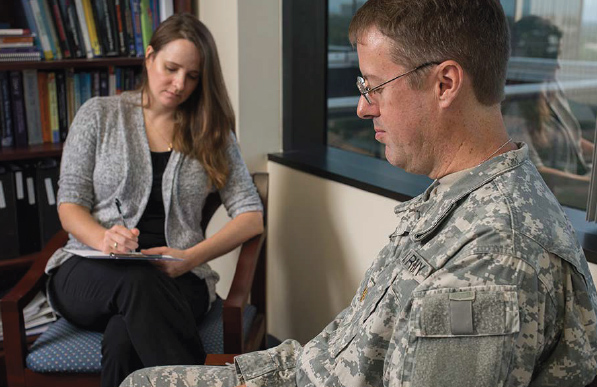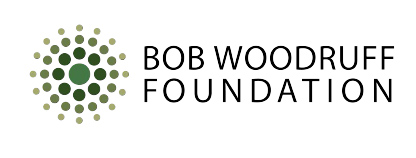Evidence-based treatments are best practices supported by research and recommended in clinical practice guidelines. Below is a list of evidence-based treatments in which we provide training.
Cognitive Processing Therapy (CPT)
Cognitive Processing Therapy (CPT) is a trauma-focused treatment that is effective in reducing symptoms of PTSD with multiple types of trauma. CPT provides a way for clients to understand why recovery from traumatic events is difficult and how symptoms of PTSD affect daily life. The focus is on identifying how traumatic experiences change thoughts and beliefs, and how thoughts influence current feelings and behaviors. An important part of the treatment is addressing ways of maladaptive thinking that can keep individuals “stuck” and get in the way of recovery from symptoms of PTSD and other problems. Through a successful course of CPT, individuals learn to challenge their unhelpful, unrealistic thoughts about the traumatic experience, the world and themselves, and as a result can heal and live a more, full meaningful life with the absence of PTSD symptoms. CPT has been implemented in a variety of treatment settings and can be conducted in individual or closed group formats.

Prolonged Exposure (PE)
Prolonged Exposure (PE) for PTSD is one of the most effective treatments for PTSD, with the largest amount of empirical data over the past few decades. PE is a time-limited, cognitive-behavioral therapy for PTSD. Treatment typically ranges from 8-15 individual sessions and can be conducted in 60-90 minute sessions. In PE, the therapist and patient work together to help the patient safely gradually approach trauma-related memories, thoughts, feelings, and realistically safe situations that are currently avoided. The two main strategies in PE are imaginal exposure, talking about the traumatic event and its meaning in a safe way and in vivo exposure, engaging in situations and behaviors that are avoided because they are related to the trauma or bring up distress or fear. Approaching instead of avoiding helps patients to change the way they think about those experiences and those changes in thinking and beliefs also lessen distress and fear. As a result, patients think about the trauma and its impact in a more helpful and adaptive way, while also expanding their lives to more activities they once enjoyed and valued.

Written Exposure Therapy (WET)
Written Exposure Therapy (WET) is an effective and efficient trauma-focused treatment for PTSD with comparable symptom outcomes to CPT and PE and low dropout rates. WET includes psychoeducation about PTSD and trauma recovery and a rationale for treatment, followed by writing about the trauma in each of five sessions following specific prompts. During WET, the therapist helps the patient reflect on the writing and encourages the patient not to avoid. Through this program of written exposure, patients have an opportunity to process their traumatic experiences and recover from PTSD. Because WET has no formal between-session practice assignments and treatment consists of just five sessions, many patients find WET to be a tolerable and helpful treatment approach for PTSD.

Crisis Response Plan (CRP)
The Crisis Response Plan (CRP) is a brief intervention used to reduce suicide risk for individuals experiencing crisis. CRPs have been shown in clinical research to be effective as stand-alone interventions, and within treatment for suicide risk, they are used clinically within a variety of behavioral health and medical settings. In creating a CRP, the mental health therapist works with the patient to develop a personalized plan of written coping strategies and resources intended for the patient to use in future periods of intense emotional distress. This includes a list of personal indicators of an emerging emotional crisis, simple self-management strategies that can be used to help reduce stress or serve as a distraction, thought-out reasons for living, social support to contact, and professional crisis support contact information and emergency services. CRPs are reviewed and revised as indicated overtime when working with a client across multiple treatment sessions.

Cognitive Behavioral Therapy for Insomnia and Nightmares (CBT-I&N)
CBT-I&N is a time-limited treatment approach to address problems with insomnia and nightmares that is typical conducted in 5 to 6 individual treatment sessions. Treatment techniques such as stimulus control, sleep hygiene, and sleep restriction directly address sleep problems. During treatment the client completes a weekly sleep diary to quantify their nightly sleep and wake patterns. This information is used by the therapist to identify patterns and collaboratively develop a sleep plan with the patient to be implemented in the next week. During treatment nightmares are addressed through in session written and expressed exposure and rescripting of the nightmare(s). Nightmare rescription helps to identify trauma-related themes and revise the nightmare story to be less distressing. Every night the rescripted nightmare is rehearsed for 15 minutes, followed by a relaxation exercise.

SPONSORSHIP



